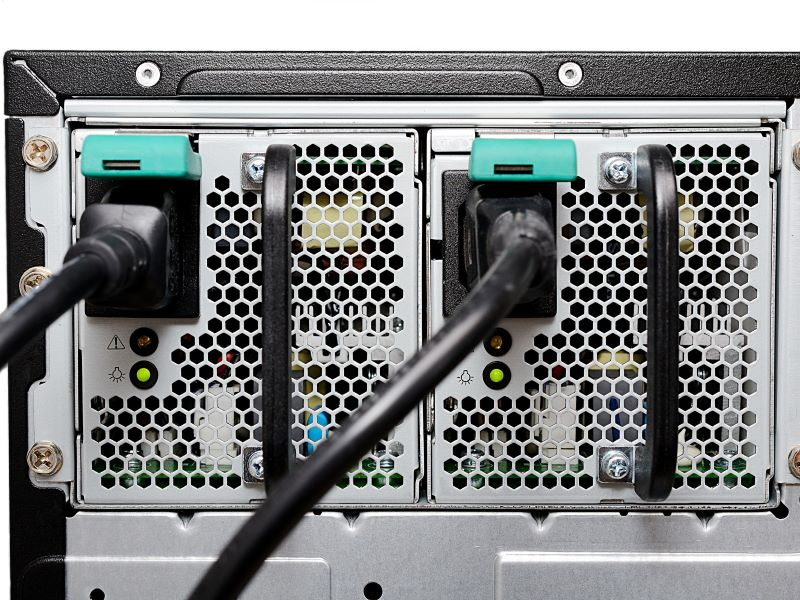- A redundant power supply is a critical component designed to ensure continuous and reliable power delivery to electronic systems.
- Found in servers and other high-end computers, a redundant power supply contains two (or more) power supply units inside it.
Downtime can result in significant financial losses and operational disruptions. So it’s crucial to maintain an uninterrupted power supply. This is where redundant power supplies come into play. By ensuring a backup power source is available, redundant power supplies help safeguard critical systems from unexpected failures. In this blog, we’ll explore what redundant power supplies are, how they work, and why they are indispensable for various industries.
What is a redundant power supply
A redundant power supply is a system configuration that includes multiple power supply units (PSUs) working in tandem to ensure continuous power delivery. The primary function of a redundant power supply is to provide an uninterrupted power source. A redundant power supply system is designed to provide a reliable power source to critical systems by incorporating multiple power supply units. If one unit fails, the other takes over seamlessly, preventing downtime and ensuring continuous operation. This system is essential in environments where any interruption in power can lead to significant consequences, such as data loss, financial loss, or compromised security. Therefore, the primary benefit is uninterrupted operation. With redundant power supplies, you minimise the risk of downtime due to power failures, ensuring your system remains available and functional. It’s like an insurance policy against unexpected outages.
Also read: How IPTP Networks overcame Red Sea cable crisis with terrestrial solutions
Also read: What is a power distribution board and what are its functions?
How redundant power supply works
Redundant power supplies typically involve two or more power supply units working together. These units are either installed in a single chassis or integrated into a system. Each power unit is capable of providing full power to the system independently. If one unit fails, the remaining units continue to supply power. When one power supply fails, the system automatically switches to the backup units without manual intervention. This process is seamless, ensuring that the system remains operational.
Redundant power supplies are equipped with monitoring features that alert administrators to any issues with the power units, such as failure or performance degradation. Many redundant power supplies are designed to be hot-swappable, meaning that faulty units can be replaced without shutting down the system. This feature is particularly useful in high-availability environments where continuous operation is critical.
Redundant power supplies play a pivotal role in ensuring the continuous operation of systems where reliability is non-negotiable. By providing a backup power source and enabling seamless failover, they enhance system reliability, uptime, and fault tolerance. Whether in data centers, financial institutions, healthcare facilities, or industrial environments, redundant power supplies are essential for maintaining uninterrupted power and protecting critical operations. Investing in redundant power solutions is a proactive measure to safeguard against power failures and ensure that systems remain operational and efficient in an ever-demanding world.

